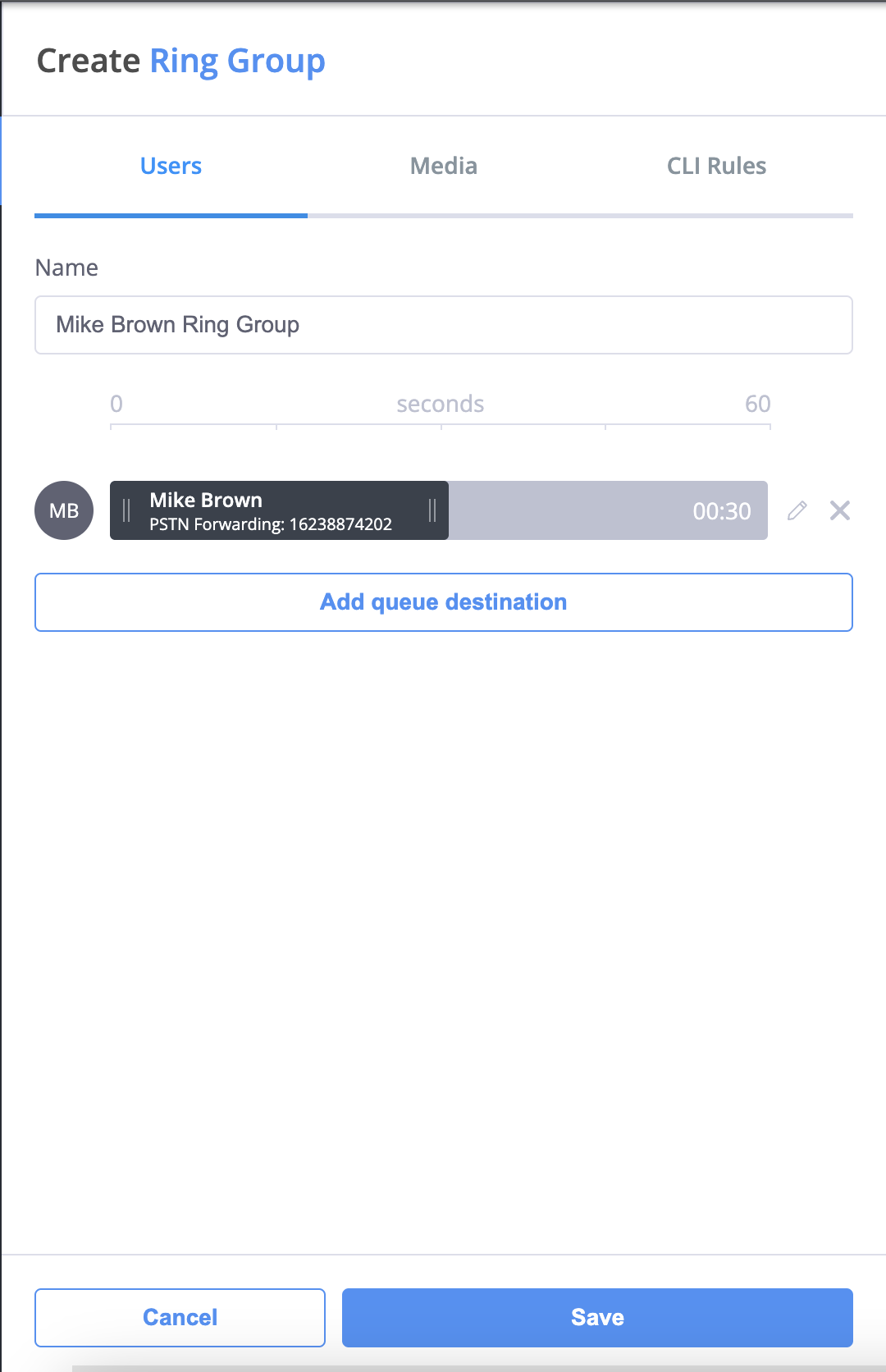Tabs and Multiple Pages
phone.systems™ allows users to segment voice systems into logical groups and functions that may be arranged over multiple workspace pages. This feature is very useful when building complex voice systems, such as a virtual PBX for a multi-branch business.
As detailed in the previous Workspace Tab Menu section, additional workspace pages may be added as required, and the various workspace pages are accessed via the tabs on the Workspace Tab menu.
This section serves to illustrate how to use multiple workspace pages in order to build advanced voice scenarios.
Moving Objects between Workspace Pages
Objects may be moved between workspace pages. In the illustration below, two workspace pages are available: Default and Sales, with the Default workspace comprising a number of objects, including an object “Sales Voice Menu”. Note that the name of the active workspace page (i.e., the page that is currently being displayed) is shown in blue.

Fig. 1. Selecting The Object
If it is required that the voice system logic for the sales division should be assembled on the Sales workspace page, then the “Sales Voice Menu” object should be moved to that page. To achieve this, “drag” the “Sales Voice Menu” object over the Sales workspace tab, until that tab is shown in blue to indicate that the Sales workspace is active. Do not release the object.

Fig. 2. Dragging The Object
Continue “dragging” the “Sales Voice Menu” object downwards into the active Sales workspace, and release that object in the desired position on that workspace. Further assembly of the voice system logic for the sales division may now continue on this workspace.

Fig. 3. Dropping The Object
Re-selecting the Default workspace tab shows the objects remaining on this page. The “Sales Voice Menu” object is no longer present, as it has been moved to the Sales workspace page.

Fig. 4. Tab View
Connecting Cables Between Objects on Different Workspace Pages
Partial voice scenarios assembled on different workspace pages must be interconnected in order to build complete voice systems. In the example above, calls must be passed from the “Main Voice Menu” on the Default workspace page to the “Sales Voice Menu” on the Sales workspace page.
To generate a cable between these two objects, “drag” a cable from the right-hand socket of the “Main Voice Menu” object, placing the mouse pointer over the Sales workspace tab, until that tab is shown in blue to indicate that the Sales workspace is active. Do not release the cable.
Continue “dragging” the cable downwards into the active Sales workspace, and position that cable over the left-hand socket of the “Sales Voice Menu” object. Release the cable.

Fig. 1. Connecting Two Objects In Different Tabs
The cable connection between the “Main Voice Menu” on the Default workspace page and the “Sales Voice Menu” on the Sales workspace page is now complete.

Fig. 2. “Sales” Tab Configuration
The logical connectivity between objects on different workspace pages is
represented by a cable terminating in a
![]() icon. By clicking on
this
icon. By clicking on
this
![]() icon, the alternate workspace page associated with this
connection will be displayed.
icon, the alternate workspace page associated with this
connection will be displayed.

Fig. 3. “Default” Tab Configuration
The cable termination icon
![]() may be dragged and
repositioned independently on each individual workspace page, without
affecting the position of the logically connected termination icon on
the other workspace page.
may be dragged and
repositioned independently on each individual workspace page, without
affecting the position of the logically connected termination icon on
the other workspace page.
Usage Example - Multiple Workspace Pages
In the PBX configuration below, the main voice menu directs incoming calls to either a sales or support departmental voice menu, and then these calls are further distributed to members within each department.

Fig. 1. Medium Business Workspace Example
This PBX configuration may be logically divided into three separate functional groups:
The main PBX logic consisting of the incoming phone numbers and the main voice menu.
The PBX logic for the sales division (starting with the sales Voice Menu object).
The PBX logic for the support division (starting with the support Voice Menu object).
In order to segment this voice scenario, additional workspace pages must be added and workspace tabs are labeled Main, Sales and Support.

Fig. 2. Workspaces
In order to logically segment this voice system, objects on the Main workspace page may now be moved to other workspace pages as detailed in the section Moving Objects Between Workspaces above.
Important
Instead of assembling the complete voice system on a single workspace page and then moving objects to other pages, it is easier and more practical to first create the required workspace pages and assemble the voice “sub-systems” on each of those pages. Once this has been done, then the partial voice scenarios on different workspace pages may be interconnected as described in the section Connecting Cables Between Objects on Different Workspace Pages.
Referring to the voice scenario described above, the logical segmentation results in three separate workspaces pages as follows:
The Main workspace

Fig. 3. The Main Workspace
The Sales workspace

Fig. 4. The Sales Workspace
The Support workspace

Fig. 5. The Support Workspace